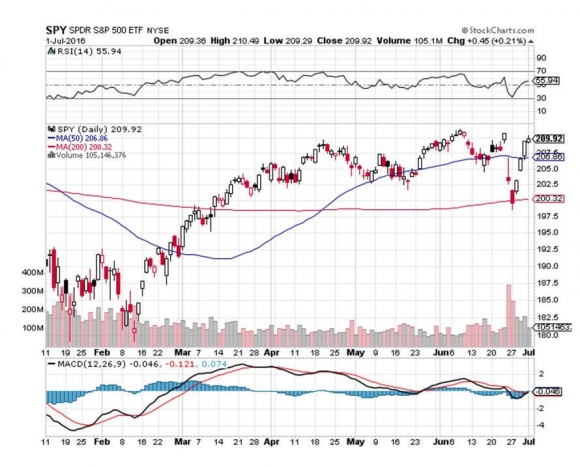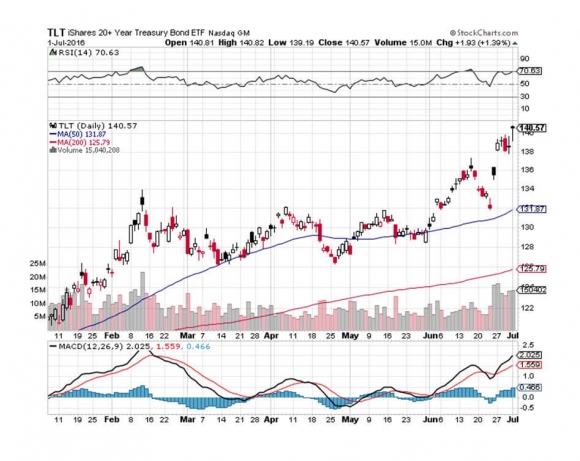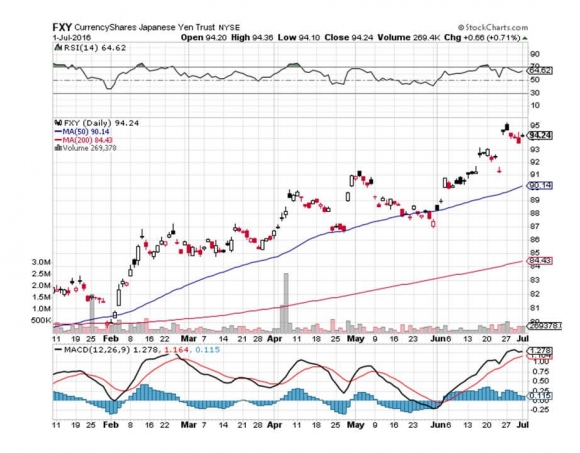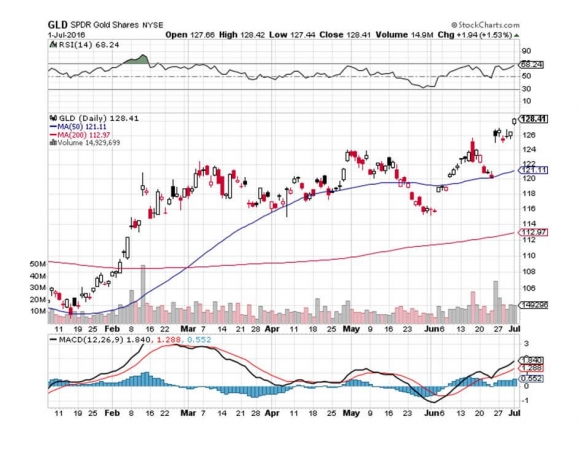There?s nothing like a quick morning dip in the eastern Adriatic to clear the mind, blow out the cobwebs, and focus thought.
The great European postwar economic boom bypassed the former Yugoslavia for lack of capital and a bankrupt communist system.
As a result, the waters here in Dubrovnik, Croatia are crystal clear compared to the polluted, algae ridden sludge you get on the Italian side.
The massive rally in risk assets last week had the same clarifying effect in indicating the future direction of financial markets.
You?ll need that clarity.
The Brexit vote is one of the preeminent risk events of my lifetime, overshadowed only by the US departure from the gold standard in 1972, the 1973 oil shock, and the 2008 financial crisis.
The S&P 500 (SPY) made back 89% of its horrific $13 point loss in a mere three trading days.
High frequency traders took the (SPY) through the 200-day moving average, triggered a ton of stop loss selling and putting in the final bottom of the move.
It has become a familiar pattern.
More stunning is that the US ten year Treasury bond blew through my 1.36% prediction making it all the way through to 1.34%.
The last time rates were this low Alexander Hamilton was the Treasury Secretary, back in 1790. This assures the US will see negative rates on the ten-year in the next recession.
Gold (GLD) is maintaining new highs, and is begging to go higher.
In the meantime, the Japanese yen (FXY), (YCS) is levitating at ?102.70, indicating that wrong way hedge fund bets have yet to be entirely unwound.
If the yen stays up here much longer, the Japanese islands will sink into the sea. We are just one Bank of Japan intervention away from a 10% move down in the beleaguered Japanese currency.
The message here?
BUY EVERYTHING!
Like the fast moving water of an Alpine waterfall, money will pour into the highest yielding asset class (US blue chip stocks), then the next one, and the next one.
Not to do so risks seeing your resume appear on Craig?s List as your angry clients bail, following three years of losses.
Traders take note: If a black swan as momentous as Brexit can?t crash stocks more than 5%, the medium term direction can only be up.
It is rare that both stocks and bonds rise simultaneously. This is one of those times.
Blame it all on negative interest rates, which are blowing apart time worn investment models everywhere you look.
They are forcing investment advisors, money managers, and traders around the globe to take on more risk with lesser returns at the expense of higher volatility.
In other words, the markets will allow you to make a little bit of money, but you are not allowed to sleep at night.
So you wanted to run away and join the circus, did you?
What has happened is that markets have quickly figured out what I did hours after the Brexit referendum results were broadcast on the dark, stormy morning of Friday, Jun 24.
I had to climb the highest mountain on the Dingle Peninsula in Western Ireland to get enough bars on my cell phone to give my handful of $10,000 a year concierge clients the heads up.
I gave them the bottom line in a few terse words: This may be your last chance to buy stocks before the pre/post US presidential election stock market melt up.
I have to tell you that there is nothing more satisfying in life than to see the confused and the disoriented follow my out of the box, non-consensus advice, and then prosper mightily from it.
As my work with the British government last week confirmed, there are just too many ways to render Brexit meaningless.
The great thing about British constitutional crisis is that they have no constitution. There is no Supreme Court, Bill of Rights, or separation of church and state. Taxation without representation is rife.
These are the issues over which America rebelled over 240 years ago.
The referendum vote was advisory only, and was not binding. If the ?leave? party wants to sue, guess who is the final arbiter in English courts?
The House of Lords, the closest thing that the UK has to a 1% Club, an overwhelmingly pro-globalization, pro-remain bunch.
This is why prime minster, John Cameron, resigned the next morning. It forces the government to sit on its hands for three months while ?exit? road blocks are set up.
The Tory?s could then run a strongly pro-remain slate of candidates in the fall. A win could constitute a reversal of the Brexit vote.
And then there is the Queen, the last functioning institution in the UK.
A card-carrying member of the 1%, the 90 year old could just say NO. She is not willing to see her Kingdom undergo an economic ?Brexicution? al la Bloody Mary, at least economically.
Demographics, which usually explain everything, auger strongly in favor of the UK remaining inside the European Community.
As the young voted strongly in favor of remaining, demographic evolution alone would swing the national vote to a ?remain? within three years, assuming that everything else remains the same.
But they are not remaining the same. The Monday after the referendum, I never heard so much back pedaling in my life.
The ?exit? leaders said they never promised they would deliver ?350 million a week in new cash flows for the National Health System that leaving the EC would make possible.
And restricting immigration, while allowing a free flow of labor? How do you accomplish that? I have never seen so few fathers claim success.
The days leading up to the vote we only heard about the benefits of Brexit, mostly nationalistic and ideological. The day after, we only heard about the economic costs.
Foreign investment into the UK has ground to a complete halt. Foreign exchange desks across the continent refused to take pounds.
A proposed merger between a Spanish and English steel company meant to save 11,000 UK jobs was put on hold.
A guest at my Dublin, Ireland Global Strategy Luncheon perhaps gave me the most telling evidence.
Attending an auction for race horses on the Monday after the vote, he told me that the British, normally big buyers, failed to show up, while those from sterling based Northern Ireland sat on their hands.
When all else fails, go to race house prices as a leading indicator.







